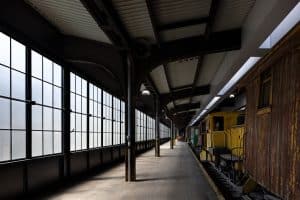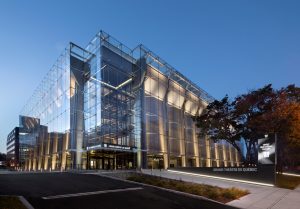- October 4, 2024
Like restoring paintings or performing a surgical intervention, conserving and preserving buildings can invert the role of the architect—as though they were never there.
Picture yourself in a city you know well. You’re familiar with its streets, its buildings—city hall, the courthouse, a century-old library. But how many of these, to your knowledge, have undergone conservation?
Heritage architecture captures both a city’s past and its present, creating a sense of timelessness. This largely stems from how well these structures adapt to modern demands such as accessibility, inclusivity, and sustainability—often with little to no visible change or disruption to its historical essence. The true artistry of conservation architecture lies in maintaining a building’s original charm while integrating necessary updates. It’s a delicate balancing act between modernization and preservation and honouring the past without overshadowing it.
Discussions of “invisible architecture” often focus on designs that blend into the landscape or evade the eye. However, the subtle work of conservation also fits this definition. It ensures history remains part of our daily surroundings without drawing attention to itself.
 The invisible building
The invisible building
In a world where architectural impact is often celebrated through bold, visible interventions, conservation architecture stands apart for its quiet brilliance. It allows the original structure to shine, with the architect taking a step back, letting the building take centre stage. This can be a humbling experience: years of work result in a project that appears almost untouched. Yet, for a building to endure, it must evolve. Whether retrofitting for energy efficiency, enhancing accessibility, or introducing biophilic elements, these changes must be integrated seamlessly to avoid detracting from the building’s historical significance.
Interventions may not need to be completely invisible, but they must respect the original structure. New additions should be compatible with and subordinate to the heritage building, distinguishable yet harmonious. A finely tuned balance allows for the introduction of modern elements while maintaining a clear hierarchy between old and new.
A silent benefactor
Whether a subtle rainwater management system or a significant structural reinforcement, any change to a heritage building requires meticulous attention to detail. This work is both resource-intensive and costly, especially when replicating historical features. However, conserving what already exists is not just about preserving history; it offers financial, social, and environmental benefits.

Yet conservation architecture faces the risk of complacency. Left untouched for decades, heritage buildings can fall into disrepair, rendering them outdated. A proactive approach is essential—not only to maintain these structures but to bring them up to modern standards. These efforts teach us valuable lessons. Older building techniques hold intrinsic value, and by integrating them into renewed forms, we ensure that users experience both the history and future potential of a space. Thoughtful and holistic, conservation requires creative solutions that safeguard relevance for generations to come.
Much like camouflage, conservation architecture is most effective when it’s difficult to tell where the original ends and the restorative work begins. This is its hidden value. Heritage conservation is not about perfection but about honouring the past, even when subtle differences emerge. These considered updates enhance both the building’s legacy and that of the city it belongs to, without overshadowing either.
Discover the possibilities of conservation architecture and its impact on cities with projects such as the Grand Théâtre de Québec, Calgary Public Building, VIA Rail Train Shed Restoration, and Calgary City Hall.